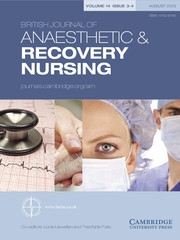No CrossRef data available.
Article contents
Mechanisms to Prevent Infection: Invasive Monitoring
Published online by Cambridge University Press: 15 June 2005
Abstract
Intravenous therapy is an essential part of clinical care used in a wide variety of healthcare settings. Thus, intravenous catheters have become indispensable to clinical practice. However, catheter related infections are a major source of morbidity and mortality with rates as high as 10% to 20%. Current guidance recommends a number of strategies to reduce the incidence of catheter-related infections. These include skin preparation, avoiding glove contamination when handling and inserting catheters and the choice of material used.
Strategies to prevent infection need to change and develop to reflect the advances in technology and delivery of healthcare.
- Type
- Original Article
- Information
- Copyright
- © 2005 Cambridge University Press


